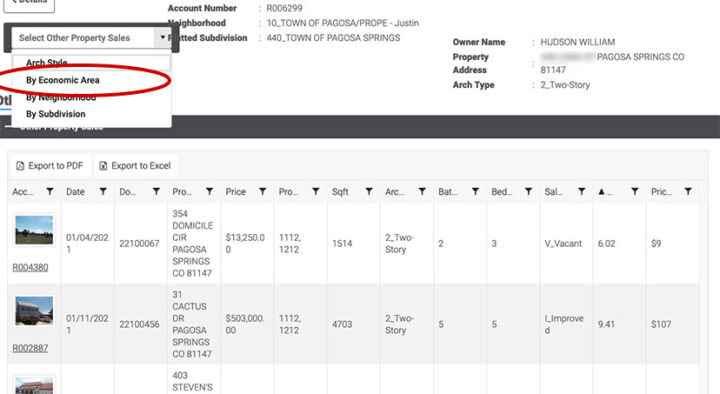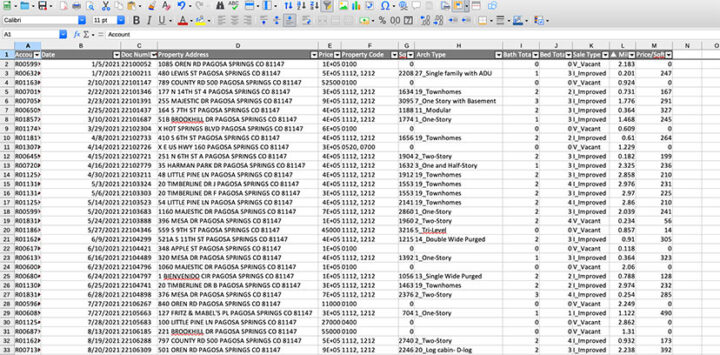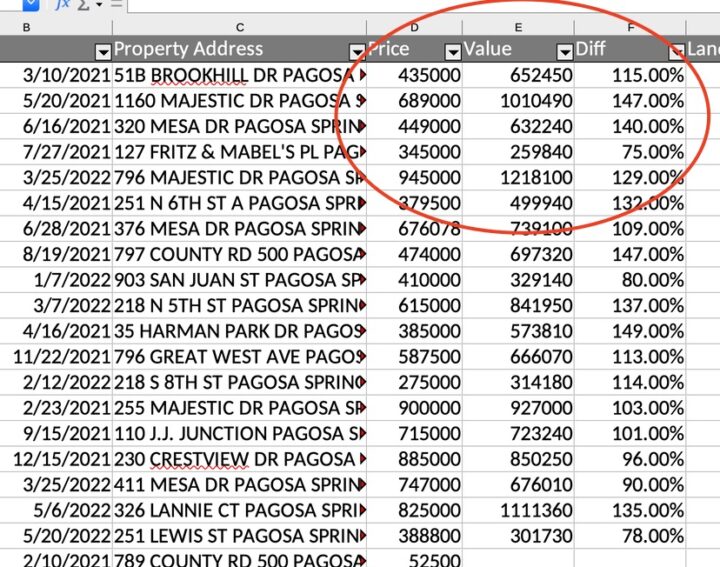I’ve never protested by property valuation, during the 30 years I’ve owned a home in Pagosa Springs, and many Daily Post readers may be in the same boat.
But this seems like as good a year as any, considering the rather dramatic valuation increases established by the County Assessor. Most properties were accurately appraised — that’s my working assumption — but some Daily Post readers will be able to successfully challenge their valuation, if they want to put in the effort.
I’ve not yet decided whether it makes sense for me to file a protest. I’m exploring this issue more as a journalist than as a person committed to filing a protest muy.
If you are interested in the actual laws (Colorado Revised Statutes; CRS) that govern property assessment and collection, here are four resources available for download:
1. List of property tax subjects, indexed to applicable CRS sections, from the Department of Local Affairs website.
2. CRS Title 39, Articles 1 through 10 (223 pages).
3. Colorado Assessors Administrative and Assessment Procedures Manual, 2023 (948 pages).
4. Colorado Assessors Real Property Valuation Manual, 2023 (550 pages).
Accurate property valuation is not a simple matter, as indicated by the 1,700-plus pages of instructions indicated above. And that doesn’t even include the actual laws.
I had the pleasure of chatting with Archuleta County Assessor Johanna Tully-Elliot on Monday afternoon. A friendly, 20-minute chat.
Not nearly long enough, however, to even begin to understand this complex issue. And if there were an issue that many property owners want to understand in May 2023, it would certainly be property valuations… values that — for some of us — have doubled as a result of the new appraisals.
The Assessor is required to conduct a thorough appraisal process every two years, according to Colorado law, using real estate sales from the previous two years to calculate the taxable value of homes, land, commercial property, agricultural property, oil & gas operations, and other types of property. In my own case, my tax bill is estimated to increase from $1.619 to $3,083.
The final day to protest your valuation is June 8. You can appeal a denial (if you are denied) to the County Board of Equalization by filing on or before July 15.
We knew increases were coming, if we were paying attention to the way local real estate prices spiraled upwards during 2020, 2021 and 2022. But we didn’t know how those price increases would affect our own particular property values.
The better understand my own situation, I downloaded the Excel file that I found on the Assessor’s website. After entering my name or address on the Property Records Search I clicked on the “Other Sales” button at the top of my property records page:

The resulting page displayed all the “2_Two-Story” homes in the county that were sold between July 1, 2020 and June 30, 2022. But I was curious about “homes in general” in my neighborhood, so I picked the “Economic Area” instead of the “Architectural Style”:

I then downloaded the Excel file of my Economic Area and opened the file using LibreOffice (an MS Office clone).
The Excel file listed some of the information related to sales in my Economic Area, but not everything that I thought useful…
So I added some new columns and filled in some data from various County property pages, including from their mapping website.
A person like myself might think… if a property was sold for, say, $500,000 during the appraisal period, then the Assessor would value that property at $500,000. That seems like common sense, but that’s not how the system is set up. Even if a property has recently sold and thus has an obvious “market value”, the Assessor still has to calculate the property value based on the overall sales in the community.
When I compared the One- and Two-Story home sale prices in my Economic Area to their valuations as defined by the Assessor’s system, I found that the valuations were often wildly different than the dollar amount someone actually paid for the property.
In the Excel detail below, the “Price” in the actual sale price during the appraisal period; the “Value” is the valuation as calculated by the Assessor’s mass appraisal system, and the “Diff” is a comparison of the two values. (I added columns E and F to the original downloaded Excel file, for my own edification.)
For example:
The purchaser of a property on Majestic Drive, in May 2021, paid $689,000… but the mass appraisal system defines the property value as $1,010,490… 147% of the actual sale price.
The purchaser of a property on Fritz & Mabel’s Place, meanwhile, paid $345,000 for a rather small home on one-acre, but the Assessor values it at only $259,840… 75% of the actual sale price.
Note that, here, I am not comparing this year’s new valuation to last year’s valuation, but rather, I’m comparing it to the actual sale price during the appraisal period.
Obviously, some people might want to protest their new valuation, and other people might not.
Just for the heck of it, I averaged all these differences, and found that, in my neighborhood (“Economic Area 10”) the One- and Two-Story homes were valued at 111% of their actual sale price. On average.
But considering that real estate prices were steadily rising during the appraisal period, the Assessor applied a “time adjustment” that supposedly caused values to better reflect values at the end of the appraisal period (June 30, 2022) rather than the beginning (July 1, 2020.)
Although the valuations are based on “averages”… you probably want to pick specific “comps” — “comparable properties” — if you want to show that your new valuation is incorrect.
If you want to protest.
Which you may not want to do.
Two things to consider, as mentioned before. If you merely complain to the Assessor that you think the valuation is “wrong”, but you don’t provide the Assessor with compelling evidence for your belief, you are probably wasting everyone’s time.
Also, by filing a protest, you might be inviting a closer inspection of your property, which might ultimately increase the valuation.
You can download the Assessor’s 2023 information packet here.



